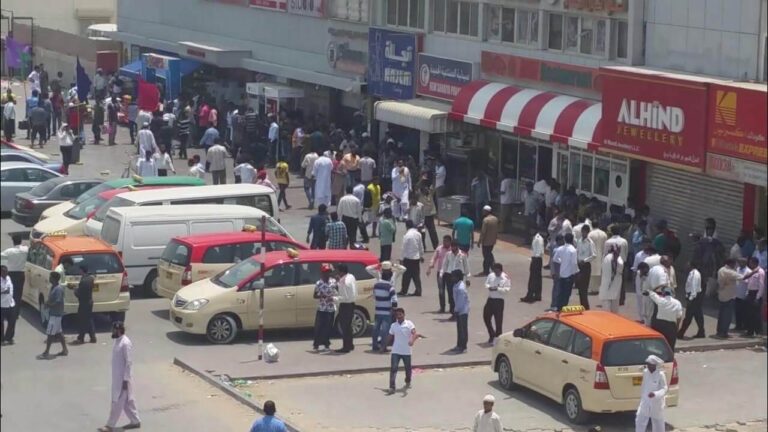Exploring Vietnam’s Remote Areas: How eSIMs Keep You Connected Off the Grid
Vietnam’s remote regions offer some of the world’s most breathtaking landscapes. From the dramatic limestone peaks of Ha Giang to the misty terraces of Sapa, these destinations promise adventure and unforgettable memories. However, staying connected while exploring these off-the-grid locations presents unique challenges that can turn a dream trip into a stressful experience.
Modern travelers rely heavily on internet connectivity for navigation, safety, and sharing their journey with loved ones back home. Traditional connectivity solutions often fall short in Vietnam’s mountainous regions, leaving adventurers without access to essential digital tools. This is where innovative eSIM technology becomes a game-changer for smart travelers seeking reliable connectivity in even the most remote corners of Vietnam.
Understanding Connectivity Challenges in Vietnam’s Remote Regions

Exploring Vietnam’s rural areas reveals the stark reality of limited internet infrastructure. While major cities like Ho Chi Minh City and Hanoi boast excellent connectivity, the further you venture from urban centers, the more pronounced these challenges become.
Why Rural Vietnam Poses Unique Internet Issues
Travelers venturing into areas like Ha Giang, Sapa, or Phong Nha often face unreliable Wi-Fi and spotty mobile coverage. Local SIM cards may not support consistent data in these regions, leaving adventurers disconnected when they need connectivity most. The mountainous terrain creates natural barriers that interfere with cell tower signals, while limited infrastructure investment in rural areas means fewer towers to provide coverage.
Weather conditions in these regions can further complicate connectivity. Heavy rains common during monsoon season can disrupt already weak signals, while dense fog in mountainous areas like Sapa can interfere with data transmission. Many guesthouses and homestays in remote villages offer Wi-Fi as an amenity, but these connections are often slow and unreliable, making it difficult to upload photos or maintain communication with the outside world.
Common Pain Points for Off-the-Grid Travelers
From navigating winding mountain roads to sharing real-time updates, unreliable internet disrupts travel plans in multiple ways. Tourists and digital nomads need dependable data for maps, communication, and safety. Getting lost on unmarked mountain trails without GPS access can turn a scenic adventure into a dangerous situation. Emergency communication becomes impossible when cell towers are sparse or overloaded.
Digital nomads face additional challenges when trying to maintain work commitments while exploring remote Vietnam. Video calls become impossible, file uploads take hours, and staying connected with clients or colleagues becomes a constant source of stress. Even leisure travelers struggle to share their experiences in real-time, missing opportunities to keep family updated about their whereabouts and safety.
Social media enthusiasts find themselves frustrated when stunning sunset photos from remote beaches can’t be uploaded immediately. The desire to share these magical moments while they’re fresh often conflicts with the reality of poor connectivity in Vietnam’s most beautiful locations.
What Are eSIMs and Why They Matter for Remote Travel
Technology continues to revolutionize how we stay connected while traveling, and eSIM technology represents one of the most significant advances for mobile connectivity. Understanding how this technology works helps travelers make informed decisions about their connectivity needs.
How eSIM Technology Works
eSIMs are digital SIM cards embedded in modern devices, allowing instant activation of mobile plans without physical cards. They’re ideal for travelers needing quick, flexible connectivity without the hassle of swapping physical SIM cards or visiting local carrier stores. The embedded chip in your device can store multiple carrier profiles, letting you switch between different networks seamlessly.
Unlike traditional SIM cards that require physical installation, eSIMs activate through QR codes or carrier apps. This means you can purchase and activate a plan from anywhere in the world with internet access. The technology works by downloading carrier profiles directly to your device, eliminating the need for physical cards that can be lost or damaged during travel.
Modern smartphones, tablets, and even some laptops now include eSIM capability. The technology supports multiple profiles simultaneously, though only one can be active at a time. This flexibility allows travelers to maintain their home number while adding local data plans for better coverage and rates.
Benefits of eSIMs for Vietnam’s Rural Adventures
eSIMs provide seamless network switching, broader coverage, and easy setup, ensuring travelers stay online in remote areas where traditional SIMs struggle. When exploring Vietnam’s countryside, you can quickly switch between different carrier networks to find the strongest signal available. This flexibility becomes crucial in areas where one carrier might have better coverage than another.
The convenience factor cannot be overstated. Arriving at Hanoi’s Noi Bai International Airport, you won’t need to search for SIM card vendors or deal with language barriers during setup. Your eSIM for Vietnam plan can be activated before departure or immediately upon landing, providing instant connectivity for calling taxis, accessing maps, or contacting accommodations.
Cost management becomes easier with eSIM plans that offer transparent pricing and flexible data allowances. Unlike traditional roaming charges that can result in shocking bills, eSIM plans provide predictable costs that help you budget effectively for your Vietnamese adventure.
Navigating Vietnam’s Remote Destinations with Confidence
Remote travel in Vietnam requires preparation and reliable tools to ensure safety and enjoyment. From the famous Ha Giang Loop to the lesser-known trails of Cat Ba Island, having dependable internet access transforms challenging journeys into manageable adventures.
Using eSIMs for Real-Time Navigation
In areas like the Ha Giang Loop, eSIMs enable access to GPS apps like Google Maps, helping travelers avoid getting lost on unmarked trails. The winding mountain roads through northern Vietnam can be confusing even for experienced travelers, with limited road signs and rapidly changing weather conditions that reduce visibility.
Offline maps provide some backup, but they lack real-time traffic information and route updates that can be crucial for avoiding construction zones or dangerous road conditions. With reliable data through your eSIM connection, navigation apps can provide turn-by-turn directions, alternative routes, and important information about road closures or weather-related hazards.
Motorbike travelers on the Ha Giang Loop particularly benefit from real-time navigation. The route includes challenging mountain passes where getting lost could mean hours of dangerous riding in poor conditions. GPS access helps identify fuel stops, restaurants, and safe accommodation options along the route.
Photography enthusiasts can use location-based apps to find the best viewpoints and sunset spots. Apps like PhotoPills help determine optimal lighting conditions and camera settings for landscape photography in Vietnam’s remote regions.
Staying Safe with Constant Communication
Reliable data ensures access to emergency contacts, local guides, or translation apps, critical for solo travelers in isolated regions. Vietnam’s remote areas can present unexpected challenges, from sudden weather changes to mechanical problems with rental motorbikes. Having immediate access to communication tools can mean the difference between a minor inconvenience and a serious emergency.
Translation apps become essential when seeking help from locals who may not speak English. Vietnamese is a tonal language that can be challenging for foreigners to pronounce correctly, making digital translation tools invaluable for basic communication about directions, food, or accommodations.
Emergency services in Vietnam can be contacted through standard numbers, but having internet access allows you to use location sharing features that help rescuers find you more quickly. Apps like What3Words can pinpoint your exact location using just three words, which is particularly useful in areas without clear street addresses.
Solo female travelers often find additional peace of mind through regular check-ins with family or friends back home. Reliable connectivity allows for scheduled video calls that confirm your safety and location without requiring you to find Wi-Fi hotspots in remote villages.
Simify: Your Trusted Partner for Seamless Connectivity in Vietnam
Choosing the right eSIM provider can make or break your connectivity experience in Vietnam’s challenging terrain. Different providers offer varying coverage, speeds, and customer support levels that directly impact your travel experience.
Why Choose Simify for Your eSIM Needs
Simify offers tailored eSIM plans for Vietnam, providing high-speed data and coverage even in remote areas where other providers struggle. With instant activation and flexible plans, Simify ensures hassle-free connectivity for travelers who demand reliability without compromise. The company partners with Vietnam’s major mobile networks to provide the broadest possible coverage across the country.
Customer support availability becomes crucial when traveling in remote areas where technical issues can’t wait for business hours. Simify provides 24/7 support through multiple channels, ensuring help is available when you need it most. Their technical team understands the unique challenges of Vietnam’s geography and can provide specific advice for optimizing connectivity in different regions.
Data speeds matter significantly when you’re trying to upload photos from remote locations or maintain video communication with home. Simify’s plans prioritize high-speed data allowances that support bandwidth-intensive activities without excessive throttling or restrictions.
Plan flexibility allows you to adjust your data allowance based on actual usage patterns. Whether you’re a light user who mainly needs connectivity for maps and messaging or a heavy user uploading videos and conducting video calls, Simify offers plans that match your specific needs and budget.
How to Activate Your Simify eSIM Before Your Trip
Setting up your Simify eSIM follows a straightforward process that can be completed entirely from home. First, verify that your device supports eSIM technology by checking the manufacturer specifications or device settings. Most modern smartphones include eSIM capability, but it’s important to confirm compatibility before purchasing a plan.
Purchase your Vietnam eSIM plan through Simify’s website, selecting the data allowance and duration that matches your travel itinerary. The purchasing process requires basic information and payment details, with confirmation typically arriving within minutes of completing your order.
Download the Simify app or access your account through their website to receive your eSIM profile and activation instructions. The QR code method provides the simplest activation process – simply scan the provided QR code with your device camera, and the eSIM profile downloads automatically.
Test your eSIM connection before departing for Vietnam by activating the plan and confirming that it connects properly to available networks. This preliminary testing ensures that any technical issues can be resolved while you still have access to customer support and your home internet connection.
Configure your device settings to use the eSIM for data while maintaining your primary number for calls and SMS. Most devices allow you to designate different lines for different purposes, maximizing the benefits of dual SIM capability.
Tips for Maximizing eSIM Performance in Rural Vietnam
Getting the most from your eSIM investment requires understanding both the technology and Vietnam’s unique connectivity landscape. Small adjustments to device settings and usage patterns can dramatically improve your connectivity experience in remote areas.
Choosing the Right Data Plan
Evaluate your travel itinerary carefully to select a plan with sufficient data for navigation, photo uploads, and communication in low-signal areas. Heavy data users should consider that video streaming and cloud backups consume significantly more data than basic navigation and messaging. Remote areas often have slower connection speeds, meaning data-intensive activities take longer and may consume more data than expected.
Consider your travel duration and the availability of Wi-Fi at your accommodations. Homestays in rural areas may offer Wi-Fi, but the quality and reliability can be unpredictable. Having generous data allowances provides backup connectivity when accommodation Wi-Fi fails or proves inadequate for your needs.
Factor in data usage for essential travel apps beyond basic communication. Navigation apps, translation tools, travel guides, and photography apps all consume data, with usage increasing in areas where you rely more heavily on digital assistance.
Budget for emergency data usage that might exceed your planned consumption. Getting lost in remote areas often results in increased map usage, while unexpected situations may require additional communication or research that consumes more data than anticipated.
Troubleshooting Connectivity Issues
Simple steps ensure your eSIM works smoothly in Vietnam’s challenging connectivity environment. When experiencing poor signal strength, try manually selecting different available networks through your device settings. Vietnamese carriers have varying coverage patterns, and switching networks can sometimes provide better connectivity in specific locations.
Device positioning significantly affects signal strength in mountainous terrain. Higher ground typically provides better connectivity, so consider hiking to elevated positions when you need to make important calls or upload content. Inside buildings or vehicles, moving closer to windows can improve signal reception.
Restart your device periodically to refresh network connections and clear temporary connectivity issues. This simple step resolves many common problems and ensures your eSIM maintains optimal performance throughout your journey.
Monitor your data usage regularly to avoid unexpected depletion in remote areas where top-ups might be more challenging to purchase. Most devices include data usage tracking that helps you understand consumption patterns and adjust usage accordingly.
Battery management becomes crucial when relying on eSIM connectivity in remote areas. Poor signal conditions cause devices to consume more battery while searching for connections, so consider bringing portable chargers or power banks to maintain device functionality throughout long days of exploration.
Sustainable Travel: The Eco-Friendly Advantage of eSIMs
Modern travelers increasingly consider environmental impact when making travel decisions, and connectivity choices offer opportunities to reduce ecological footprint while exploring Vietnam’s pristine landscapes.
Reducing Plastic Waste with Digital SIMs
Unlike physical SIM cards, eSIMs eliminate the need for disposable plastic, aligning with eco-conscious travel goals in Vietnam’s pristine landscapes. Traditional SIM cards require plastic packaging, carrier materials, and often disposal of existing cards when switching providers. This waste accumulates quickly among frequent travelers who might purchase new SIM cards for each destination.
eSIM technology eliminates this physical waste stream entirely. Digital activation means no plastic cards, no packaging materials, and no disposal concerns. For travelers exploring Vietnam’s national parks and protected areas, reducing plastic waste aligns with conservation efforts and responsible tourism practices.
The manufacturing footprint of eSIMs is significantly lower than physical SIM cards. Traditional SIM production requires plastic manufacturing, printing, packaging, and global distribution networks that contribute to carbon emissions. Digital eSIM profiles eliminate most of these environmental costs.
Supporting Responsible Tourism
Using eSIMs minimizes environmental impact while enabling travelers to contribute positively to local communities through better connectivity and reduced waste. Enhanced connectivity allows travelers to discover locally-owned accommodations, restaurants, and tour operators that might not have strong online presence but offer authentic experiences that benefit rural communities.
Better connectivity supports responsible travel documentation and sharing that can promote sustainable tourism in Vietnam’s remote regions. Travelers can research and support eco-friendly accommodations, conservation projects, and community-based tourism initiatives that provide economic benefits while protecting natural resources.
Digital payment capabilities enabled by reliable connectivity reduce the need for cash transactions and support local businesses that accept mobile payments. This digital infrastructure development benefits both travelers and local communities by improving economic opportunities and reducing reliance on cash-based economies.
Environmental monitoring and conservation apps require internet connectivity to function effectively. Travelers interested in citizen science projects or environmental monitoring can contribute valuable data about wildlife sightings, pollution levels, or conservation status using apps that rely on eSIM connectivity.
Just as savvy travelers choose reliable connectivity for Vietnam, similar considerations apply when exploring other destinations. Whether you need an Europe eSIM for multi-country European adventures or eSIM for UK travel for exploring Britain’s countryside, the same principles of preparation and provider selection ensure consistent connectivity wherever your adventures take you.
FAQs
Do eSIMs work in Vietnam’s most remote areas like Ha Giang?
Yes, eSIMs from providers like Simify offer coverage with major Vietnamese networks, ensuring connectivity in many rural regions, though signal strength may vary depending on terrain and weather conditions. While coverage exists in most areas along popular routes like the Ha Giang Loop, extremely remote locations may still experience limited connectivity.
How do I know if my phone supports eSIM for Vietnam?
Check your device settings under “Mobile Data” or “Cellular” to see if eSIM options appear, or consult your manufacturer specifications. Most modern smartphones, including iPhone XS/11 or later and recent Android models from Samsung, Google, and other major manufacturers, support eSIM technology. You can also contact your device manufacturer’s customer support for definitive confirmation.
Are eSIMs more expensive than local SIM cards in Vietnam?
eSIMs are often comparably priced to local SIM cards and can save money by avoiding airport markup prices and time spent searching for SIM vendors. Providers like Simify offer flexible plans to suit different budgets, with transparent pricing that helps avoid unexpected roaming charges or complex local carrier plans with hidden fees.
Can I activate an eSIM after arriving in Vietnam?
Yes, you can activate an eSIM anywhere with internet access, including airport Wi-Fi upon arrival. Simify’s digital setup allows you to purchase and activate plans even after landing, though activating before departure ensures immediate connectivity upon arrival. Airport Wi-Fi is typically sufficient for downloading and activating eSIM profiles.
What happens if I run out of data in a remote area?
Simify allows easy online top-ups through their website or app, ensuring you can add data to your eSIM plan without needing to find local vendors in rural Vietnam. Most top-up purchases process immediately, restoring connectivity within minutes. However, you’ll need some internet access to complete the purchase, so monitor usage carefully in very remote areas.
- 410 Bus Timetable, Route & Complete Guide for Abu Dhabi (UAE) - November 25, 2025
- Dubai Vehicle Licensing Services Integration, UAE: How RTA’s Digital Transformation Is Redefining Mobility - November 25, 2025
- Driver Affairs: Empowering the Backbone of UAE’s Road Network - November 25, 2025






